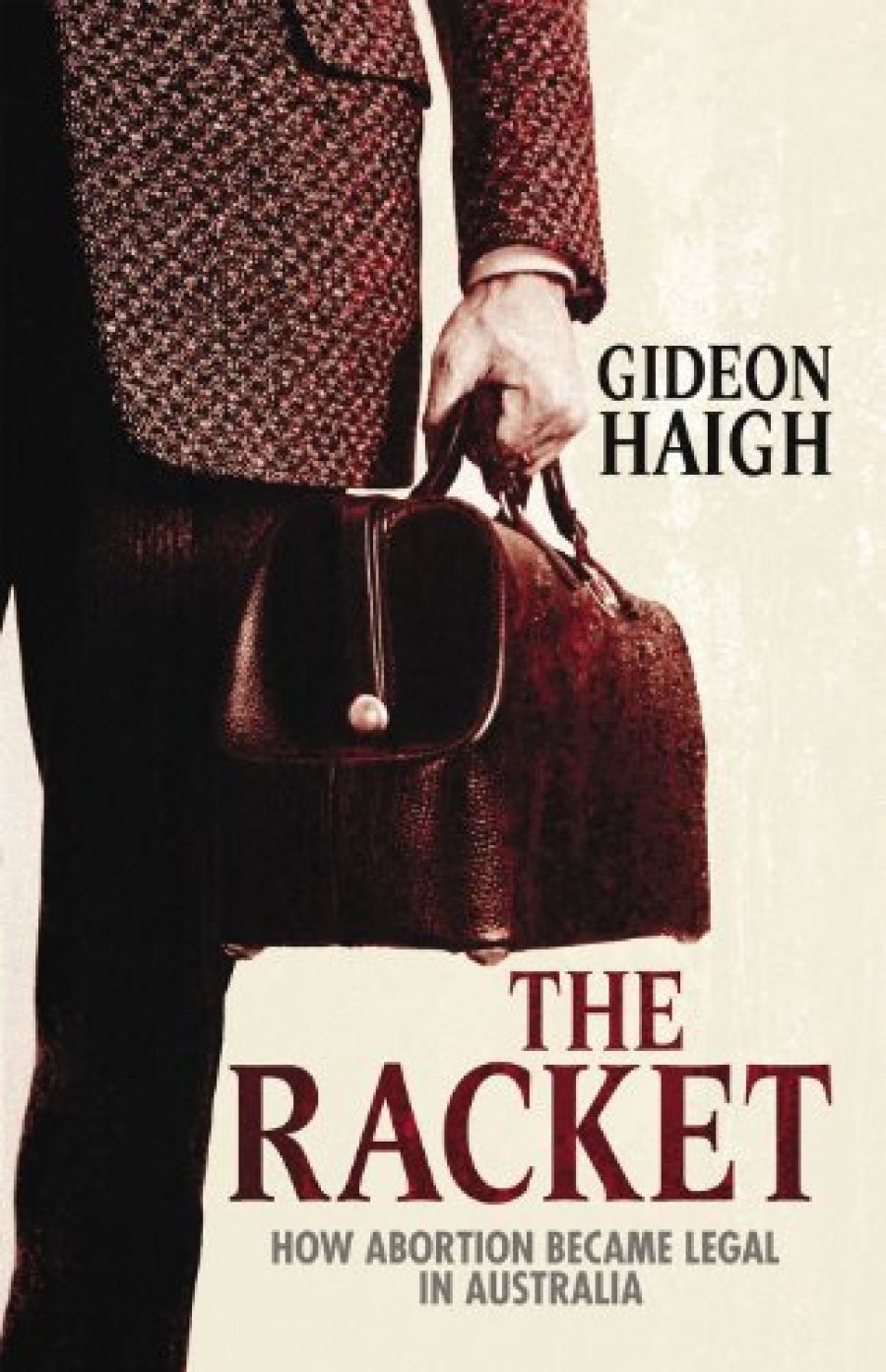
- Free Article: No
- Review Article: Yes
- Online Only: No
- Custom Highlight Text:
In May 1965 the Victorian police raided a nondescript terrace house in East Melbourne. They were tracking illegal abortionists. Two doctors, one an outgoing social figure, bold and brassy, the other a quiet, studious man, were performing abortions on the premises. They had refused to pay protection money, and probably the raid was inevitable. The police rampaged about, taking files and notes, and eventually found three young and very groggy women who were clearly recovering from anaesthetic. The quick-thinking women claimed to be recovering from pelvic examinations, but the police were not fooled, and the women were rushed off to the Royal Women’s Hospital where a doctor probed them and their photographs were taken, legs apart. While the women were enduring this undignified end to their surgery, the doctors too were in trouble. With good lawyers, their hearings were adjourned, but they returned to their old work, a little more quietly, but still performing abortions.
- Book 1 Title: The Racket
- Book 1 Subtitle: How abortion became legal in Australia
- Book 1 Biblio: MUP, $34.95 pb, 236 pp
The title of Gideon Haigh’s new book is a little misleading. This book is as much about humanity and personal suffering as it is about political and legal machinations. It begins with a skilful reading of abortion in early twentieth-century Australia, detailing the often desperate lengths women would go to abort. If there was desperation, though, it was often not an extraordinary event. Abortion was common, if not banal: in the four years before her death in 1929, Elizabeth Bren aborted herself with elm bark eighteen times. As she had told a friend, she had four hungry children already – she could not have another. The agency of ordinary women is startling. It is all too easy to perceive them as victims.
The Racket then moves on to examine the webs of intrigue surrounding abortion: in particular police corruption, and the intersections between doctors, police and abortion-mongers. This is fascinating stuff. Haigh, a Melbourne journalist and prolific writer, traces the networks of bribery, graft and profiteering, providing lively character sketches and agile analysis throughout. These were the new ‘faceless men’: ‘a clique of rich, powerful, well-connected and secretive individuals controlling a much-in-demand service for which they could essentially charge as they pleased.’ Haigh manages to give them faces and to explain their involvement in abortion. Money, it seems, was generally the deciding factor. The doctors were protected by police – both high and low ranking – who were paid admirably for their services. Police such as the gambling Jack Ford – who had a close, even sexual relationship with the dynamic abortion-broker Peggy Berman – wielded immense power: the power to protect, but also to prosecute. The author weaves carefully through the warrens of police corruption, intimidation and graft, to the law courts, where a handful of powerful abortionists were charged. At times the story of the women who had abortions is almost lost, but never quite; Haigh is careful to gain as much knowledge about the women as the sources allow.
Perhaps the criminality of it all could not last forever. It was a system imploding from within when Bertram Wainer entered into the politics of Victorian abortion. In The Racket, Wainer is constructed both as a hero and almost an anti-hero – Haigh is too accomplished a writer to allow Wainer a straightforward role. Wainer was a doctor, not an abortionist, but he quickly integrated himself into the political landscape of abortion politics, demanding safe and legal abortions for women in Victoria. He was an advocate for women and for reform, but there was also a tinge of self-promotion, though there is no doubt of his influence and good intentions. The final section of the book follows Wainer and his relentless drive towards a form of decriminalisation, something which has only recently been fully achieved in Victoria.
The Racket is extensively researched. Haigh has meticulously followed the trail, using fascinating oral hiStories and interviews to supplement the historical record. Court documents, too, have been mined to great effect: for example, there are some fascinating excerpts that highlight the level of police culpability. For academic readers, the lack of footnotes may be irritating, and it is unfortunate that in such a well-researched book the referencing is not superior. But it does not lessen its readability.
This is, in many ways, an ambitious work. It adds an entirely new dimension to studies of abortion history in Australia. Theoretically, Haigh remains generally within the paradigms set up by Judith Allen in her ground breaking work Sex and Secrets: Crimes Involving Australian Women since 1880 (1990). He notes, as does Allen, that, despite the abject nature of the surgery, there was a basic public sympathy for abortion (based in part on the taboo of single maternity). But Haigh moves beyond this, to provide the first in-depth assessment of the institutionalised frameworks of illegal abortion and how they operated within Australian society. He draws out the peculiar space abortion occupied: it was seen as necessary, but unacknowledged. It was crucial to the social order, yet generally absent from the public discourse. As Haigh suggests, it was an ambivalent place: ‘the unspeakable crime but, hovering between public disapproval and private tolerance, the unenforceable law.’
It is unexpected to find a book on abortion that is both engaging and entertaining. At times it verges on a wild romp through the criminal underground of Melbourne. Yet Haigh manages to draw an absorbing tale of illegal abortions without losing a sense of the trauma and suffering of the women involved in these criminal terminations.


Comments powered by CComment